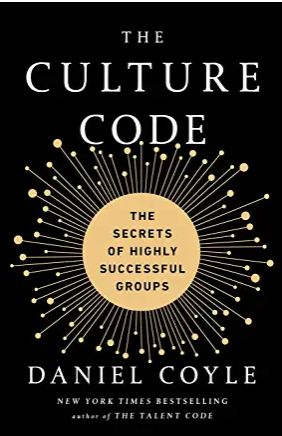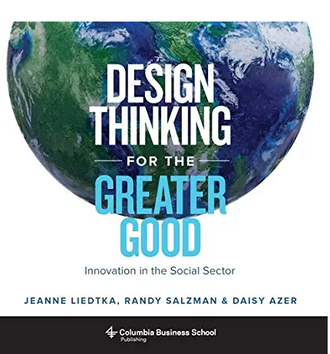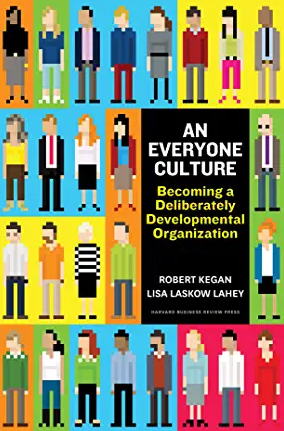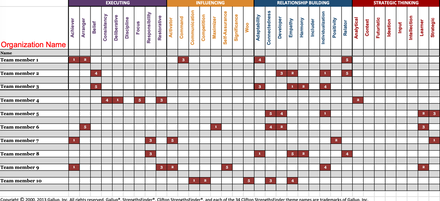Mission: Impact podcast & blog
Build a better world without becoming a martyr to your nonprofit cause
Listen on:
 The Culture Code: The Secrets of Highly Successful Groups By Daniel Coyle What creates successful group and organizational cultures? That is the question that Daniel Coyle pursues in his book. “Culture is a set of living relationships working toward a shared goal. It’s not something you are. It’s something you do.” US culture tends to focus on the charismatic, visionary leader yet Coyle’s research finds that successful groups tend to do lots of small things towards success rather than large dramatic things. Three key skills emerge – build safety, share vulnerability and establish purpose. Like Jim Collin’s Good to Great, Coyle finds a lot of quiet, observational leaders who cultivate a healthy ecosystem and group around them through lots of questions at key points to help team members learn to think on their own. There are lots of useful and actionable points in the book. I wish for a future when business books highlight as many women as men in their examples without having women in the title!  Design Thinking for the Greater Good: Innovation in the Social Sector By Jeanne Liedtka, Randy Salzman & Daisy Azer Design thinking is a problem solving approach that is human centered. It prioritizes really getting to know the people involved in your challenge and looking at the world from their perspective. It focuses on multiple options, experimentation and iteration. This method has served to democratize design and Jeanne Liedtke’s model makes it particularly accessible (What is? What if? What wows? And What works?). While the process originated in Silicon Valley, Liedtke and her team profile how design thinking has been used in the social sector. They include case studies from government, national, state and local nonprofit organizations – from the US and internationally. Each instance showcases the real experience – from the excitement at the start of the project to the dead-ends and false starts to results that in many instances could not have been envisioned from the outset. Using design thinking, the professionals highlighted get to see their organization from the perspective of whom they serve. With this, they are able to identify the ways in which the system is not made for the client. Then they are able to imagine how they might make things better. This is all in the service of having clients have a better and more humane experience while getting the help the organization is designed to deliver. If you have just heard about design thinking and have wondered how it might apply in your situation, this book is a great place to start.  An Everyone Culture: Becoming a Deliberately Developmental Organization By Robert Kegan and Lisa Laskow Lahey “In most organizations, everyone is doing a second job no one is paying them for…Most people are spending time and energy covering up their weaknesses, managing other people’s impressions of them, showing themselves to their best advantage, playing politics, hiding their inadequacies, hiding their uncertainties, hiding their limitations. Hiding.” (pg1, An Everyone Culture) What if this were not necessary? An Everyone Culture describes a few unicorn organizations that have truly put people at the center of their purpose. Developing and investing in people. Not as an afterthought or bonus for just for a few people – for everyone. Where the culture revolves around helping everyone recognize, acknowledge and learn from their mistakes, build on their strengths and stretch and grow. Lots of organizations give lip service to the idea that people are their most important asset. Yet they rarely act as if that were really true. Each of the three organizations the authors describe as deliberately developmental organizations (DDO) do this through a multitude of practices that center transparency, regular feedback across all levels, team building and professional development – at the individual, team and organizational level. While the authors went into their research assuming that being a DDO would contribute to the business success of these organizations, they concluded by the end that in fact being a DDO is the cause of the business’ success. Much has been written about how emotional intelligence and people skills will be the key differentiators as work continues to morph and shift. Learn from these leaders what that might look like.  Photo by Markus Spiske temporausch.com from Pexels Photo by Markus Spiske temporausch.com from Pexels I recently worked with a team at a local nonprofit organization to help them get a better sense of each team member’s strengths. They wanted to think about how they could better integrate those strengths into their work every day. Rather than focusing on trying to fix your weaknesses, building on what already comes naturally can help you move into a state of flow more frequently and do better work. In his book Drive, Daniel Pink describes what researchers have learned about motivation. External motivators – incentivizing behavior with rewards—can work in the short run. Yet for knowledge work, extrinsic rewards are actually demotivating over time. Instead mastery, autonomy and purpose are the keys to tapping into people’s own motivation. Learning more about your team’s strengths and giving them more opportunity to use those strengths gives them more chances to feel mastery and flow. This creates a virtuous circle of motivation! Getting startedA good place to start is to invest in the Gallup Strengthsfinder assessment. It is as easy as buying the CliftonStrengths 2.0 book or Strengths Leadership. With the book, you receive a code that enables you to take the assessment and learn about your top five strengths (out of 34). You receive reports that explain how these show up in your work and life. Both books are in the 10-$15 range so are pretty affordable. If you are looking at this for yourself, you might consider tracking which of your strengths you are using regularly in your work over a week or a month and then see what is missing. If you are not using a strength as often, how can you build it in? Gallup organizes their 34 strength themes into four categories or domains. These include executing, influencing, relationship building, and strategic thinking. Executing is all about getting things done. Influencing is about having a wider impact on a broader audience. Relationship building is pretty self-explanatory – it is all about emotional intelligence and the people side of things. Strategic thinking is about learning and scanning with a futuristic perspective – imagining what could be and helping the team make more informed decisions. Putting strengths to workI have had teams each take the assessment and then we had conversations about how we might capitalize on the strengths that the team brings to the table. Some questions that we considered included: • What are your strengths and why are they important to you? • How are you using your strengths in your work? • How could you better integrate your strengths into your work? • Are there projects coming up that your strengths might make you uniquely suited to contribute to? Team level We then stepped up a level and looked at our strengths as a totality. We plotted everyone’s strengths against the four domains to see our strengths as a composite. A sample of what this could look like is to the left. We then discussed: • Where is the team strong? How does that show up in our work? How you work together? • How can we capitalize on the team’s collective strengths? • Are there gaps that might mean the team has blind spots? What does this mean for our work? Integrating strengths into your workHow will the group stay aware of each other’s strengths? Just having one conversation about strengths will not serve to keep these front and center as you do your work and plan for the future. Some possibilities include:
• Starting staff meetings periodically with a question about how team members have used a strength in their work recently. • How can you incorporate considering each team member’s strengths as you plan for who will be part of future projects? • If they can’t add a project to their workload, could they advise on the project? • How can you build it into your processes and how might you shape each team member’s assignments to better capitalize on their strengths? Want help identifying and tapping into the strengths of your team? Inquire about a coaching session. |
Archives
April 2024

Grace Social Sector Consulting, LLC, owns the copyright in and to all content in and transcripts of the Mission: Impact podcast, as well as the Mission: Impact blog with all rights reserved, including right of publicity.
|
Telephone301-857-9335
|
info[at]gracesocialsector.com
|
Grace Social Sector Consulting, LLC, owns the copyright in and to all content in, including transcripts and audio of the Mission: Impact podcast and all content on this website, with all rights reserved, including right of publicity.
|